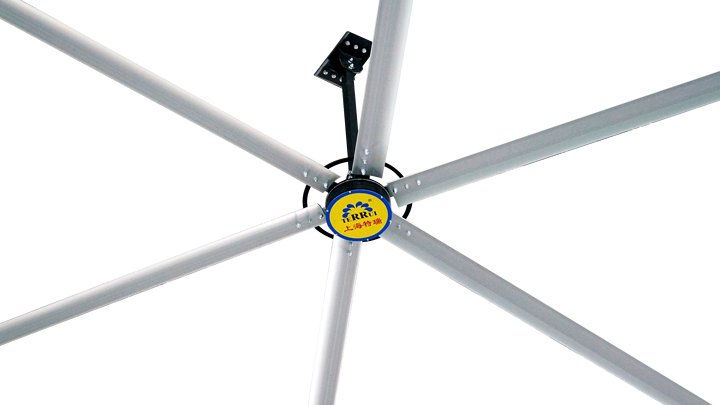Create Time: 04 ,14 ,2023
Sources and Effects of Ammonia
The air environment of breeding directly affects the production efficiency of cattle. The concentration of ammonia gas in cattle barn must be controlled well. Generally, there is no ammonia gas in the air outside the barn, which mainly comes from the decomposition of nitrogen-containing organic matter such as feces, urine, bedding and feed. The ammonia content in the barn is related to the ventilation effect, cleaning degree and feeding density.

Too much ammonia affects cattle very badly. Ammonia dissolved in the respiratory tract and eye conjunctiva, produce alkaline stimulation, can make the mucosa inflammation, congestion and edema, secretion increase, serious cause eye burn, tissue necrosis, cause necrotizing bronchitis, pulmonary edema and congestion, eye blindness and other symptoms. It enters the blood from the alveoli and binds to hemoglobin, disrupting its ability to carry oxygen and causing tissue hypoxia. For a short time, low concentrations of ammonia can be excreted in the urine and can be relieved. But long time high concentration poisoning is not easy to relieve, make central nervous paralysis, toxic liver disease, heart damage.

Cattle exposed to low concentrations of ammonia for a long period of time will reduce their resistance and immunity and significantly weaken their resistance to tuberculosis and other infectious diseases. Under the poisoning of ammonia, the infection process of anthrax bacillus, Escherichia coli and pneumococcus was accelerated significantly. Too much ammonia also reduces cattle productivity. Ammonia stress significantly reduced the daily gain and feed intake of beef cattle. With the increase of ammonia concentration, the respiration rate of beef cattle will decrease significantly, and the heart rate will increase significantly.

On the other hand, mosquitoes in livestock farms are also the main vectors of cattle disease. The bacteria they carry are environmental pathogens or conditioned pathogens, which are easy to cause disease when the body resistance of livestock and poultry is reduced. Bovine sarcoidosis has become one of the most troublesome diseases in cattle breeding due to the spread of mosquitoes. Bovine sarcoidosis is a viral disease spread mainly by arthropods such as mosquitoes, flies, ticks and fleas.

With the rapid development of animal husbandry industry, the continuous improvement of scale and specialization level, intelligent farming has gradually entered people's vision. The integration of the Internet of Things, big data, cloud computing and other technologies can realize intelligent breeding, improve the production and output value of breeding farms, so that farmers can easily become "feeding experts".
Intelligent breeding solutions
According to the current breeding needs, Shanghai Terrui measures various environmental indexes in the breeding farm through monitoring and Internet of things equipment. Through the comprehensive control system, automatic adjustment and control of temperature, humidity and other parameters can be realized, so as to create a comfortable and healthy growth and environment for livestock and achieve better economic benefits.

01 No blind spot monitoring to strengthen livestock management
Multiple HD camera ball machines are deployed in the livestock farm to monitor the area without dead corners. The intelligent HD camera can identify the livestock in the area, and the data can be processed through the platform to generate livestock positioning images, which is convenient for unified check and management of the livestock.

02 Intelligent iot devices improve management efficiency
Through the Internet of Things equipment, various environmental parameters such as air temperature and humidity, ammonia concentration, carbon dioxide concentration and illumination can be collected and uploaded for research and judgment.
Managers can remotely manually or automatically control the site facilities and equipment, including ventilation, lighting and other equipment, to improve management efficiency.

03 Big data platform achieves all-round supervision
Through the smart breeding big data platform, a map integrates all-round information of livestock farms. No matter the quantity, distribution, fattening inventory, epidemic detection, market information and other data, can be displayed on the screen to assist managers to carry out comprehensive and scene data supervision on livestock farms, and provide decision-making basis for them.

Internet of things devices

Ammonia content is very important for the growth of livestock, ammonia is one of the most harmful gases in the animal enclosure, the level of ammonia concentration will directly affect the growth and development of animals and the ability to resist viruses. Ammonia sensor is generally equipped with a buzzer alarm device, when the ammonia concentration exceeds the standard buzzer will appear alarm sound, to remind the management personnel need to regulate the ammonia concentration.

Light affects the growth and development of livestock and poultry, appetite, sexual maturity, molting and so on. The illumination state can be understood by the illumination sensor. By extending the illumination time or increasing the illumination intensity, the function of the adrenal cortex can be enhanced, immunity can be improved, appetite can be promoted, digestive function can be enhanced, weight gain speed and survival rate can be improved.

Temperature and humidity sensors are used to monitor and collect the temperature and humidity values inside and outside the breeding house in real time, and the collected data is reported to the cloud server for storage and management. Users can view the temperature and humidity data online in real time, which is more accurate and efficient. By comparing the temperature inside and outside the house, users can take timely measures to control the temperature and humidity.
 English
English  中文
中文 

















